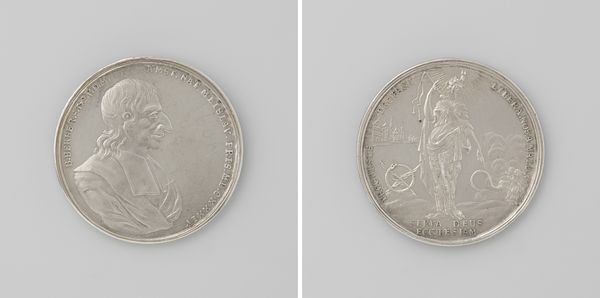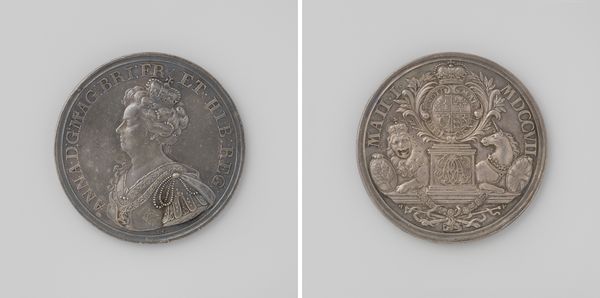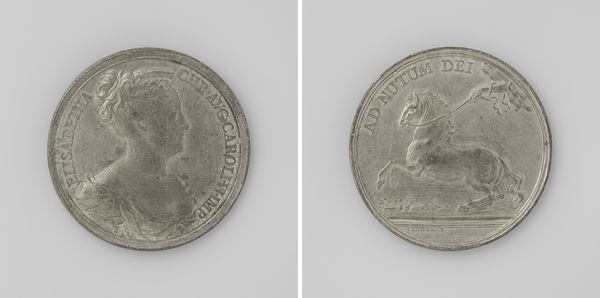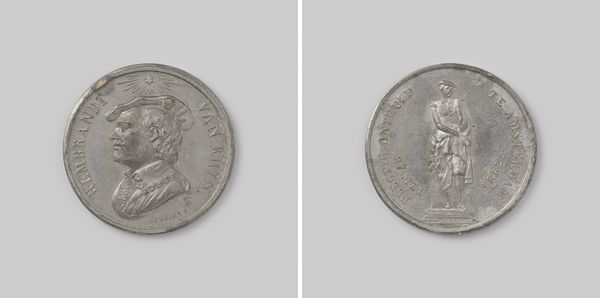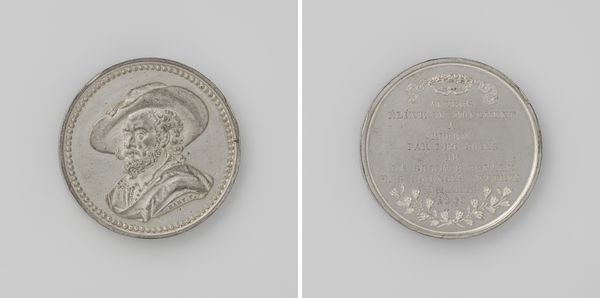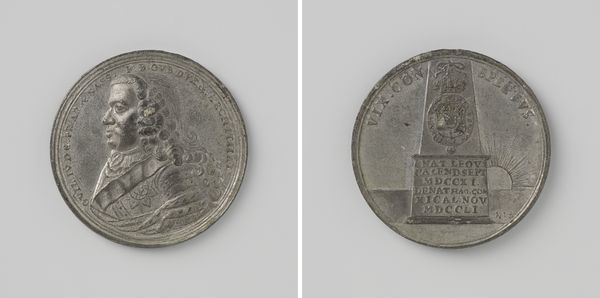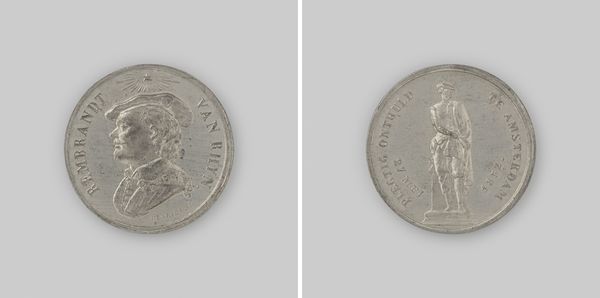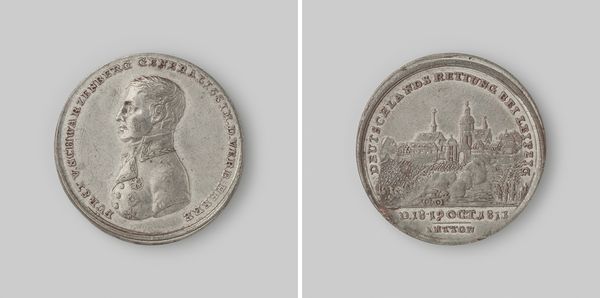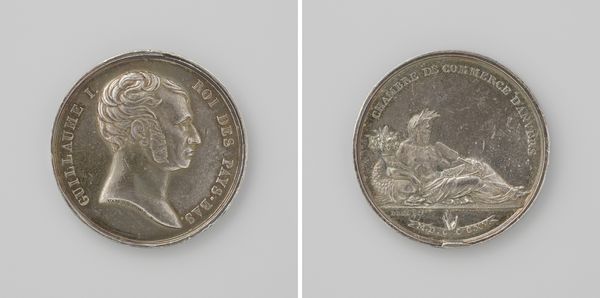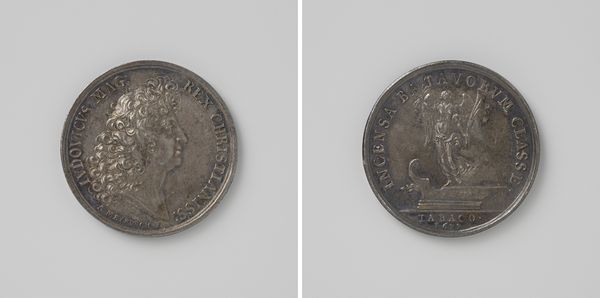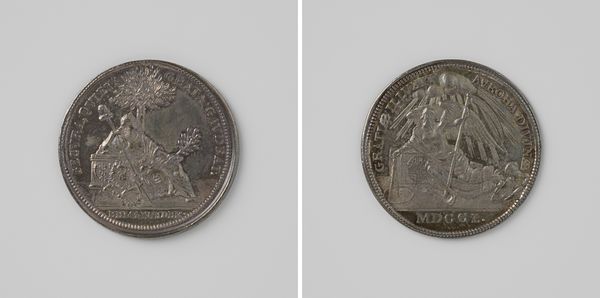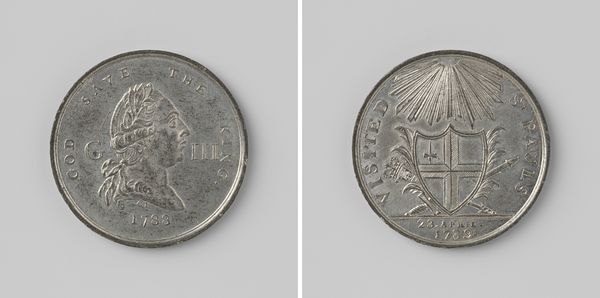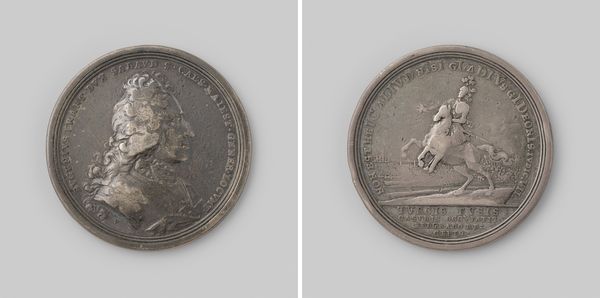
Eeuwfeest van de tocht van Willem III naar Engeland, ter ere van Willem III en George III 1788
0:00
0:00
metal, relief, bronze
#
portrait
#
neoclacissism
#
metal
#
relief
#
bronze
#
history-painting
Dimensions: diameter 3.3 cm, weight 9.78 gr
Copyright: Rijks Museum: Open Domain
Curator: Here we have a bronze commemorative medal from 1788. The artist is monogrammed, C.I., celebrating the centennial of William III's arrival in England, but also honoring George III. My immediate impression is how this material suggests a need for these royal houses to promote continuity and tradition in the face of political instability. Editor: That's interesting. I'm drawn to the medium itself. Metal—bronze specifically—was a consciously employed material often associated with strength, permanence, and, of course, wealth. Given it was rendered through relief, which requires multiple steps, I find it difficult to reconcile that this medal isn't purely a celebration, but also an implicit attempt to solidify and perhaps even to manufacture the legacy and lineage of these figures. Curator: Exactly! It's about manufacturing consent, really. The "Glorious Revolution" as they termed it, and how the British monarch justified its lineage, but the fact that the relief medium allows for dissemination and reproduction, opens a dialogue on whose histories get the material support necessary to endure in the cultural memory. Editor: Absolutely, the very circulation of these medals served as a tangible reminder of royal power dynamics. How interesting is the date, 1788, right on the cusp of revolutions! Curator: You're absolutely correct! Thinking about the political anxieties of the time gives the piece greater resonance. There’s this dialogue about divine right and popular legitimacy encoded in the very production and the choice to cast it in a neoclassical style. The decision emphasizes rationality and order that must have been read quite differently across various social strata in England, or, frankly, globally. Editor: What do you make of how similar both leaders appear, coiffed in identical ways. Isn't the claim that history repeats itself rooted in power structures? Curator: Perhaps this is the artist underscoring those connections, reminding viewers of history's cyclical nature, the importance of leadership to societal health. Editor: I think engaging with a relatively commonplace object like this medal, we can use a materialist approach to contextualize art's purpose beyond mere aesthetics to unearth fascinating discussions about gender, social class, and history. Curator: Absolutely. Considering who manufactured and distributed these reliefs, where, and in what socio-political conditions really contextualizes this little token of power.
Comments
No comments
Be the first to comment and join the conversation on the ultimate creative platform.
